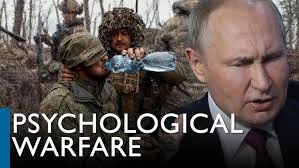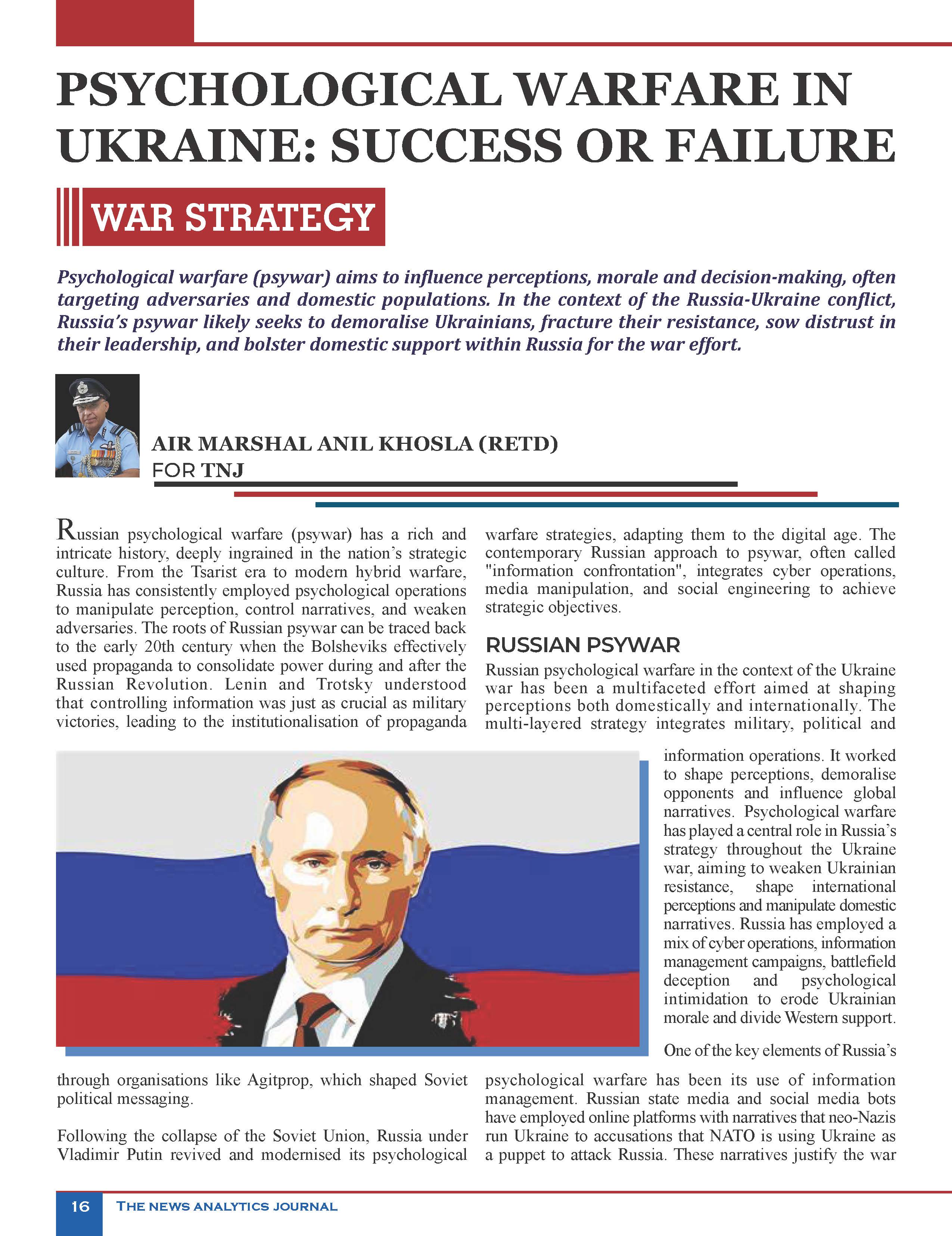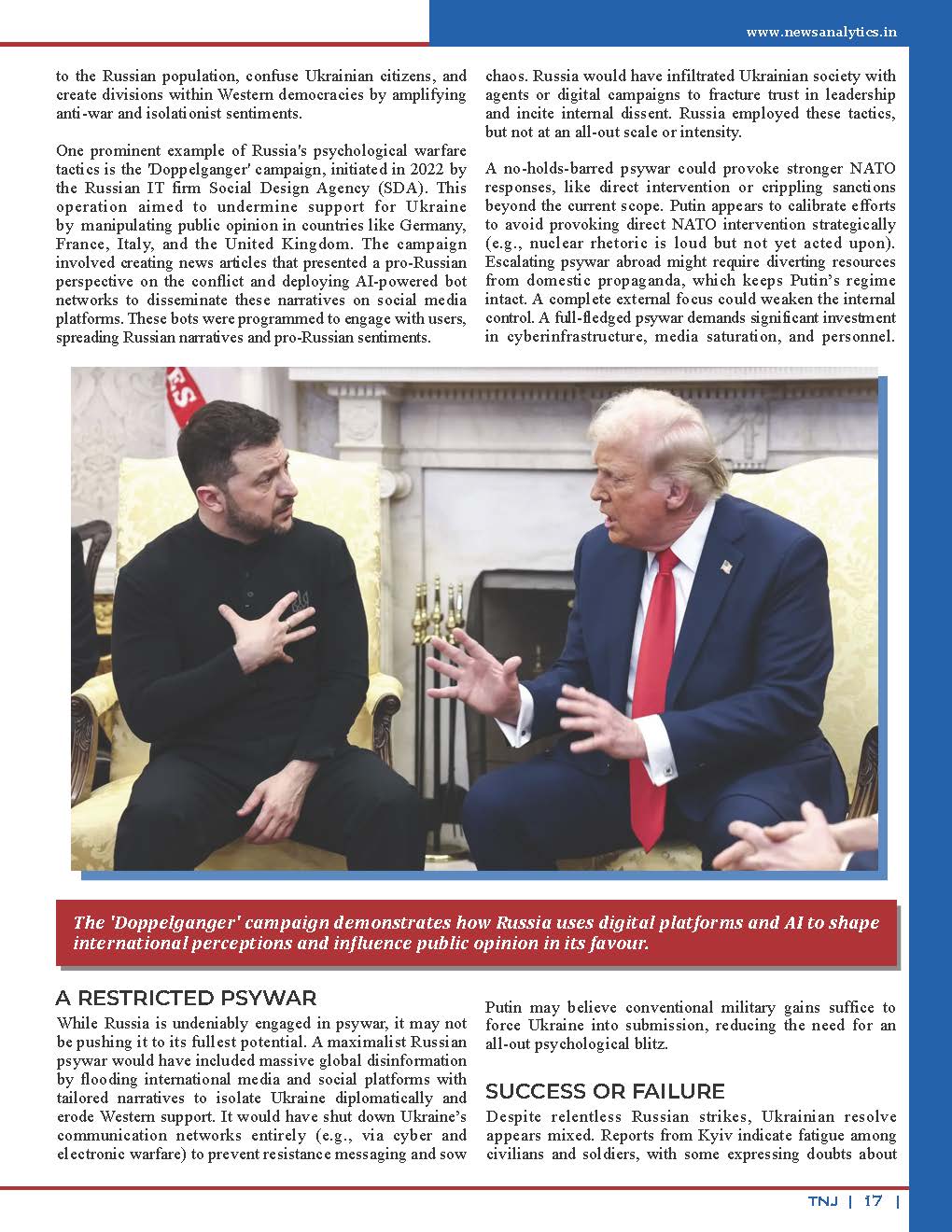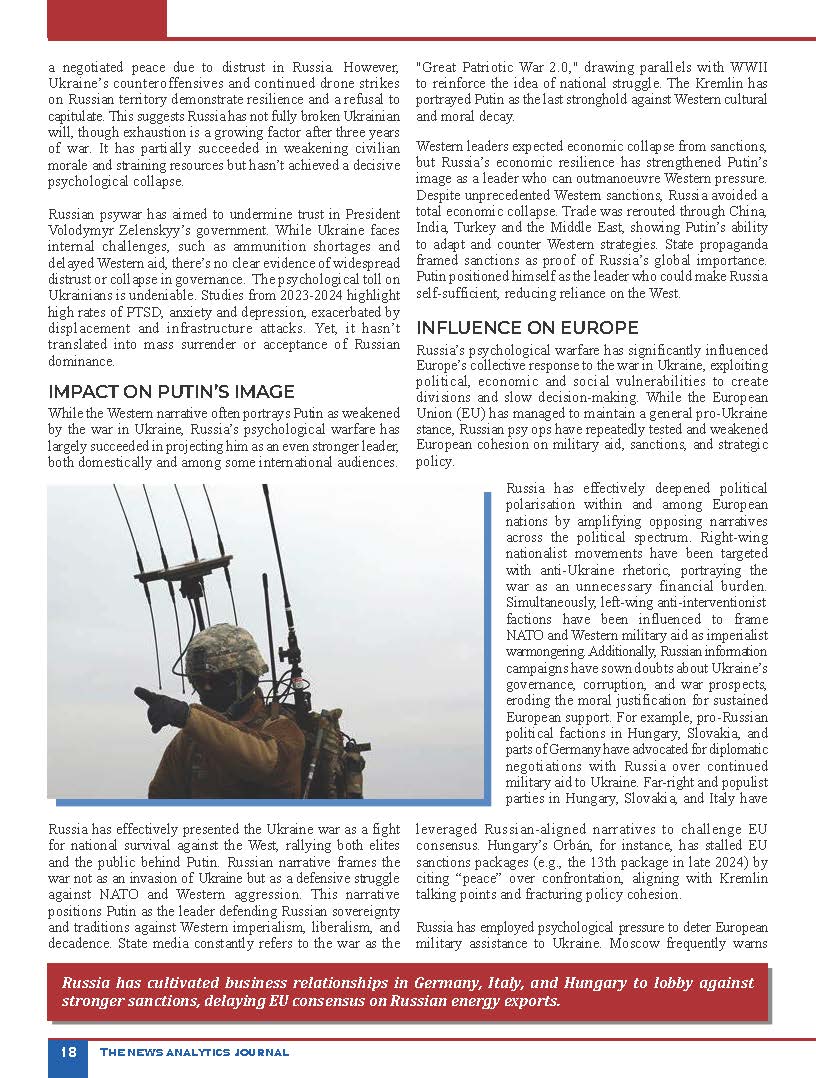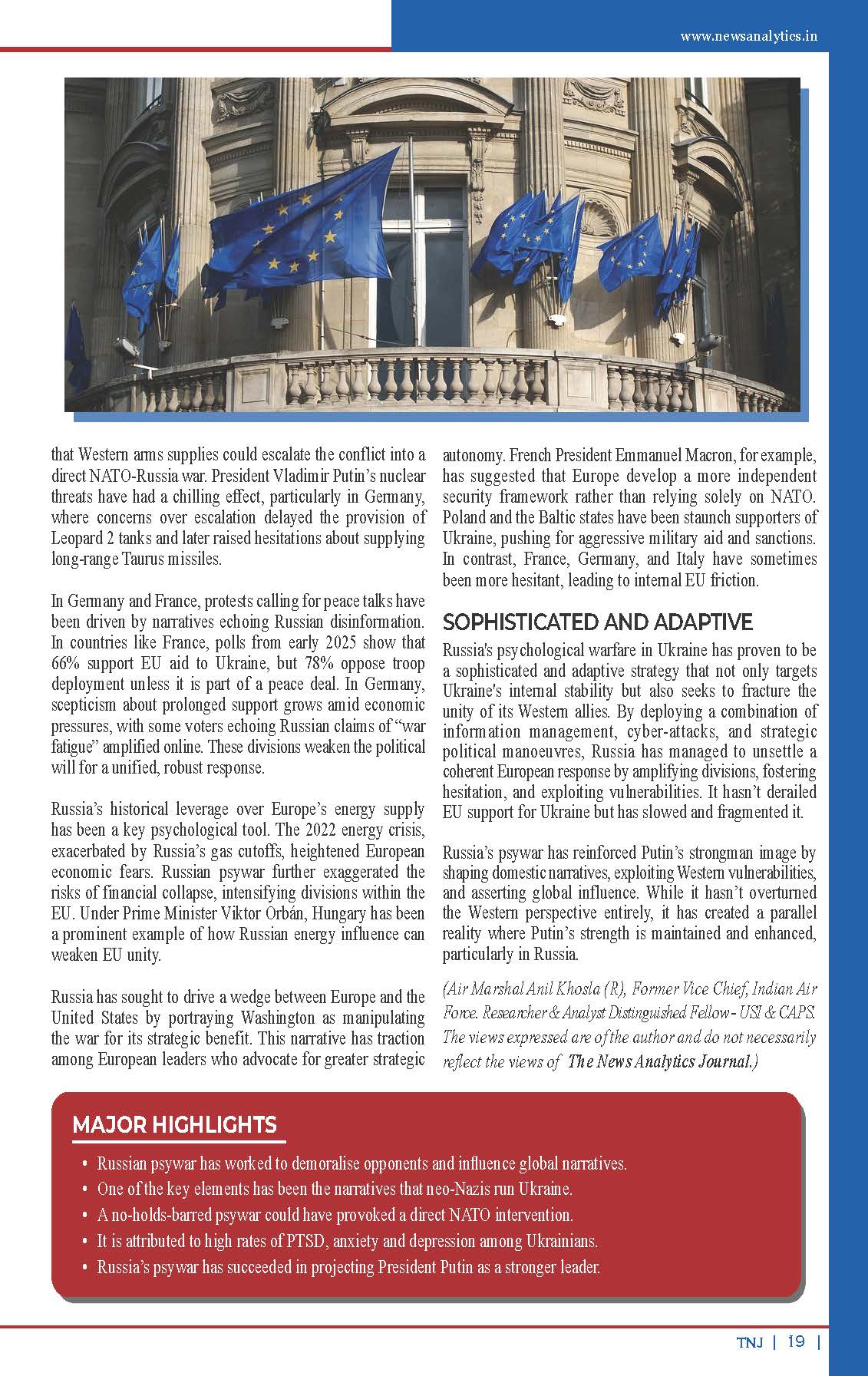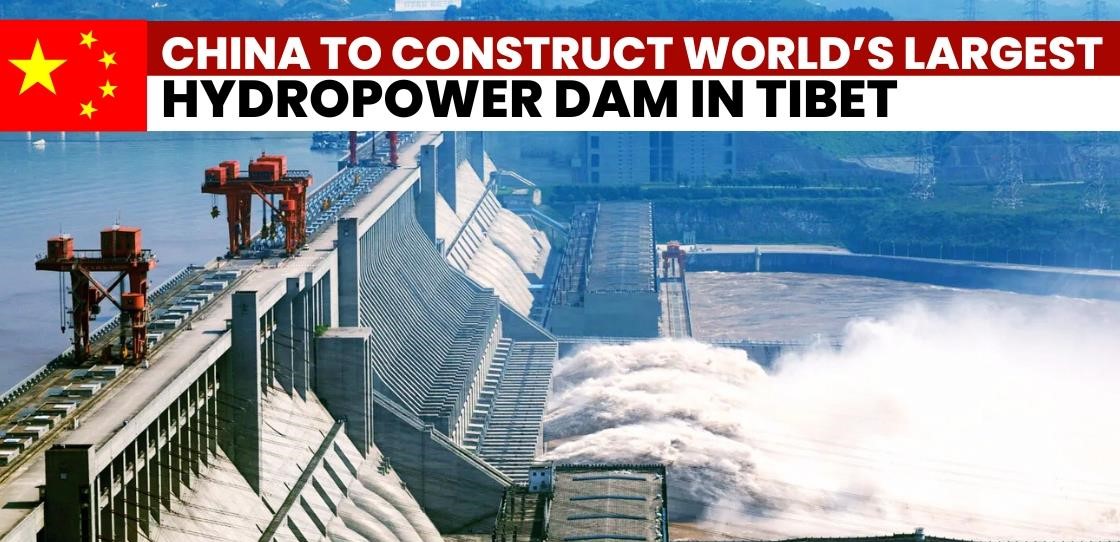My Article was published on the Indus International Research Foundation Website on 02 April 25.
Fighter aircraft exports and development are more than commercial transactions or technological endeavours. Fighter exports and joint ventures serve as key instruments of statecraft, influencing alliances, shaping military doctrines, and reinforcing spheres of influence. Beyond economic interests, fighter exports often signal political alignment, with buyers and sellers engaging in long-term defence cooperation that extends beyond individual transactions. Complex negotiations usually accompany the sale of advanced fighter jets, offset agreements, and technology transfer arrangements, which carry significant diplomatic and security implications. The United States, Russia, China, and European powers dominate this space, but emerging players like India, South Korea, and Turkey increasingly assert themselves. There is a need to explore the multifaceted dimensions of fighter exports and joint ventures, analysing their impact on global security, economic interests, and diplomatic manoeuvring.
The Strategic Significance of Fighter Aircraft Development Programs
Fighter aircraft represent the apex of military aviation, integrating state-of-the-art engineering, advanced technology, and substantial financial investment. These platforms are key instruments in modern warfare, providing air superiority, precision ground attack capabilities, and deterrence. The strategic significance of fighter jets extends well beyond their battlefield utility, influencing geopolitical alignments, economic landscapes, and technological advancements.
Power Projection. The export and co-development of fighter aircraft significantly enhance a nation’s ability to project power beyond its borders. Supplying fighter jets to allies, an exporting nation extends its strategic reach, ensuring its influence in key regions. Nations with advanced fighter capabilities can assert dominance over contested airspace, deter potential adversaries, and support allied operations with force projection.
Alliance Building. Defence agreements involving fighter jets are instrumental in solidifying alliances. The procurement of these aircraft often necessitates long-term agreements that go beyond a simple arms transaction. Training programs, maintenance support, and logistical cooperation ensure sustained engagement between supplier and recipient nations. For instance, the U.S. sale of F-35 fighters to NATO allies strengthens collective defence, while India’s collaboration with France on the Rafale program deepens bilateral ties.
Economic Impact. Fighter aircraft programs play a crucial role in economic development for exporting and recipient nations. Manufacturing these sophisticated platforms generates high-skilled jobs, fosters technological innovation, and stimulates the defence industry. For importing nations, participation in joint ventures or localised production can help build a domestic aerospace sector, reducing long-term dependence on foreign suppliers and fostering economic self-reliance.
Technological Sharing. Collaborative fighter programs provide an avenue for technological transfer, enabling recipient nations to develop indigenous capabilities. By engaging in co-development projects, such as India’s involvement with Russia on the Su-30MKI or Japan’s partnership with the U.K. and Italy on the next-generation fighter program, nations acquire critical knowledge in avionics, stealth technology, and aerospace engineering. This reduces reliance on foreign manufacturers and strengthens national security.
Geopolitical Dimensions of Fighter Exports
Fighter aircraft exports are deeply intertwined with the geopolitical strategies of major military powers. Beyond economic gains, these transactions serve as instruments of influence, shaping alliances, regional security dynamics, and global power structures. Exporting fighters enables nations to strengthen partnerships, enforce strategic conditions, and maintain regional balances of power.
Exporting Influence. Fighter aircraft exports are often tied to the exporting nation’s broader geopolitical objectives. The U.S. dominates global fighter exports, offering aircraft such as the F-16, F-15, and F-35. These sales typically include conditions that align recipient nations with U.S. strategic goals, such as interoperability with NATO forces and adherence to U.S.-led arms control policies. For example, selling F-35 fighters to NATO allies and Gulf Cooperation Council (GCC) states strengthens collective security frameworks and reinforces U.S. influence in these regions. On the other hand, Russian fighter exports, including the Su-30, Su-35, and MiG-29, play a crucial role in Moscow’s foreign policy. Russia leverages these sales to sustain its geopolitical clout in South Asia, Africa, and the Middle East. India’s long-standing acquisition of Su-30MKI fighters exemplifies this strategic relationship, ensuring continued defence cooperation between the two nations. China is emerging as a formidable player in the fighter export market. The JF-17 Thunder, co-developed with Pakistan, exemplifies Beijing’s ambitions to challenge U.S. and Russian dominance. With its affordability and modularity, the JF-17 has gained traction among developing nations seeking capable yet cost-effective fighter platforms.
Export Restrictions and Conditionality. Exporting nations often impose restrictions to safeguard their strategic interests and limit the recipient’s operational autonomy. Exporting nations usually restrict access to critical fighter technologies to prevent potential adversaries from gaining sensitive capabilities. This limitation affects recipient nations that seek to develop indigenous aerospace industries but must navigate restrictions on advanced avionics, stealth technology, and weapon systems. The U.S. enforces strict end-user agreements to regulate how exported fighters are used and resold. For instance, Turkey’s removal from the F-35 program following its purchase of Russia’s S-400 air defence system underscores the geopolitical stakes of such agreements.
Regional Balance of Power. Fighter aircraft exports significantly influence regional security landscapes. Exporting nations frequently calibrate their sales to maintain a delicate balance and prevent regional destabilisation. The U.S. sells advanced fighters like the F-15 and F-35 to Saudi Arabia and Israel. While supporting GCC states against Iran, Washington ensures that Israel retains a qualitative military edge through exclusive access to superior variants and additional defence systems. Russia’s fighter sales to India and China highlight its efforts to balance relationships with two regional powers with a complex strategic rivalry. By equipping both nations with advanced aircraft, Moscow maintains leverage while preventing either from becoming overly dependent on Western defence suppliers.
Joint Ventures: A Collaborative Approach.
Joint ventures in fighter aircraft development represent a strategic approach to balancing technological advancement, economic efficiency, and national security interests. Participating nations can foster technological independence by sharing costs, risks, and expertise while strengthening geopolitical alliances. These collaborations play a crucial role in shaping the global defence landscape.
Technology Sharing and Sovereignty. Joint fighter development programs enable nations to develop cutting-edge aircraft while enhancing domestic aerospace capabilities. Notable examples include. A collaboration between Germany, the UK, Italy, and Spain, the Eurofighter Typhoon exemplifies how nations can pool resources to produce a world-class multirole fighter. The program has enhanced European defence capabilities and reinforced industrial cooperation among partner nations. A joint project between Pakistan and China, the JF-17 Thunder allowed Pakistan to develop an affordable and capable fighter while gaining valuable experience in aircraft manufacturing. This partnership has strengthened Pakistan’s aerospace industry, reducing reliance on Western suppliers.
Geopolitical Complications. Despite their advantages, joint ventures are often complex and fraught with challenges. Competing interests among partner nations can lead to inefficiencies, delays, and disputes over work share. For instance, the Eurofighter program experienced significant delays due to disagreements over each partner’s production priorities and technological contributions. Nations involved in joint ventures may have differing operational requirements or export policies, leading to complications in decision-making. Varying national security interests can hinder smooth cooperation and affect the program’s long-term success.
Emerging Collaborations. New joint ventures reflect the evolving nature of global defence partnerships and the push for technological superiority. A Franco-German-Spanish initiative aimed at developing a 6th-generation fighter, FCAS underscores Europe’s desire for strategic autonomy in military aviation. The program will integrate next-generation technologies such as AI, stealth, and advanced networking capabilities. Led by the UK in collaboration with Italy and Japan, the Tempest program highlights the growing trend of non-U.S. defence collaborations. This initiative aims to develop a highly advanced fighter with state-of-the-art avionics, weaponry, and data fusion technologies, demonstrating a shift in defence cooperation beyond traditional alliances.
Challenges in Fighter Exports and Joint Ventures
Exporting fighter aircraft and international joint ventures in military aviation face significant challenges. These range from economic constraints and technological dependencies to political risks and intense competition. Each of these factors shapes the global fighter aircraft market and influences the success of such programs.
Economic Constraints. Modern fighter jets are prohibitively expensive, limiting their affordability for many nations. A single advanced multirole fighter can cost tens or even hundreds of millions of dollars, not including operational and maintenance expenses. Exporters often offer financing options, leasing arrangements, or government-backed subsidies to mitigate this. However, these financial mechanisms can strain national budgets and face domestic political scrutiny. For instance, India’s procurement of Dassault Rafale jets from France was marred by alleged controversy over pricing, alleged favouritism, and offset agreements. Such economic considerations can delay or cancel deals, affecting both export and importers.
Technological Dependencies. Fighter aircraft exports often create long-term dependencies on the supplying nation for maintenance, spare parts, and upgrades. This dependence extends to software updates, weapons integration, and operational training. The geopolitical implications of such dependencies can be significant, as the exporter retains leverage over the recipient. For example, many nations operating American-made fighters must seek U.S. approval for upgrades or modifications, restricting their operational autonomy. Similarly, India’s reliance on Russian aircraft like the Su-30MKI has led to logistical challenges due to The Russia-Ukraine war and Western sanctions on Russia, disrupting the supply of critical components.
Political Risks. Defence cooperation and fighter exports are susceptible to shifts in political leadership and international alliances. Changes in foreign policy or diplomatic disputes can abruptly halt ongoing programs. The United States’ decision to exclude Turkey from the F-35 Joint Strike Fighter program after Ankara purchased the Russian S-400 missile system exemplifies how political disagreements impact military collaboration. Such disruptions affect the purchasing nation and have economic and strategic consequences for the supplier.
Export Competition. The global fighter jet market is fiercely competitive, with the U.S., Russia, China, and France among the key players. Nations engage in aggressive marketing, offering attractive offset deals, technology transfers, and financing packages to secure contracts. The competition is further intensified by geopolitical alignments, with countries often choosing suppliers based on broader strategic partnerships rather than purely technical or economic factors. Fighter exports are highly competitive, with nations like the U.S., Russia, China, and France vying for market dominance. This competition can lead to aggressive marketing tactics and the provision of offset deals to sweeten contracts.
The Future of Fighter Exports and Joint Ventures
The landscape of fighter exports and joint ventures is set to evolve significantly, driven by technological advancements, the rise of new defence players, and shifting geopolitical dynamics.
Sixth-Generation Fighters. The development of sixth-generation fighters will reshape the geopolitics of fighter exports. Nations investing in advanced capabilities such as artificial intelligence, stealth, and directed-energy weapons will dominate future markets. Programs like NGAD (U.S.), FCAS (Europe), Tempest (UK-Japan-Italy), and the HAL CATS Program highlight the race to define the next generation of air power. These aircraft will demand extensive collaboration and significant financial investments, potentially altering traditional supplier-recipient relationships.
Regional Players. Emerging defence producers like South Korea (KF-21 Boramae) and India (Tejas MK2, AMCA) are entering the global market, challenging established exporters. These nations aim to reduce reliance on imports while expanding their geopolitical influence through exports. Their ability to offer cost-effective alternatives and localised production incentives could shift market dynamics and disrupt the dominance of traditional suppliers like the U.S., Russia, and France.
Unmanned Combat Aerial Vehicles (UCAVs). The growing adoption of UCAVs presents a parallel trend in fighter exports. Nations like Turkey (Bayraktar TB2) and Israel (Heron, Harop) have already established themselves as leaders in this field, with significant geopolitical implications. As unmanned systems become more capable and cost-effective, they may replace or complement traditional manned fighters, leading to a worldwide shift in defence procurement strategies.
Realignments. As global power shifts, fighter exports and joint ventures reflect new alliances and rivalries. The U.S.-China competition, the rise of multipolarity, and regional conflicts will shape the market’s future dynamics. Countries will increasingly seek defence partnerships that align with their strategic interests, making flexibility and technology-sharing critical for successful export programs.
Conclusion
The geopolitics of fighter exports and joint ventures is a multifaceted domain where technology, economics, and strategy converge. As nations pursue advanced capabilities and seek to bolster their influence, fighter programs will continue to serve as instruments of diplomacy, deterrence, and power projection. The interplay of competition and collaboration in this field will shape the future of airpower and the broader contours of international relations.
Please Do Comment.
Link to the article on the website:-
For regular updates, please register your email here:-
References and credits
To all the online sites and channels.
Pics Courtesy: Internet
Disclaimer:
Information and data included in the blog are for educational & non-commercial purposes only and have been carefully adapted, excerpted, or edited from reliable and accurate sources. All copyrighted material belongs to respective owners and is provided only for wider dissemination.
References:-
- Bitzinger, R. A. (2008). “The Global Arms Trade: The Shifting Strategic Landscape.” Survival, 50(2), 55-68.
- Eriksson, M. (2021). “The Mirage of European Defence Autonomy: Fighter Jet Collaboration and Transatlantic Tensions.” Journal of Strategic Studies, 44(5), 767-789.
- Gilli, A., & Gilli, M. (2019). “Why China Has Not Caught Up Yet: Military-Technological Superiority and the Limits of Imitation, Reverse Engineering, and Cyber Espionage.” International Security, 43(3), 141-189.
- Taylor, T. (2013). “Offsets, Technology Transfer, and Defense Industrialization: The Case of India’s Fighter Jet Programs.” Defense & Peace Economics, 24(5), 453-472.
- Stockholm International Peace Research Institute (SIPRI). (2024). Trends in International Arms Transfers.
- European Union Institute for Security Studies (EUISS). (2023). The Future of European Fighter Jet Collaboration: FCAS vs. Tempest.
- Indian Ministry of Defence. (2023). Defence Production and Export Policy 2023.
- China’s State Administration for Science, Technology, and Industry for National Defense (SASTIND). (2023). China’s Defense Industrial Reforms and Export Strategies.
- The Diplomat. (2023). “China’s Fighter Jet Exports: How JF-17 and FC-31 Are Changing the Market.”
- Hartley, K. (2014). The Economics of Defence Policy: A New Perspective. Routledge.
- Bitzinger, R. A. (2017). Arming Asia: Technonationalism and the Dynamics of Defence Industrialization. Routledge.
- Sapolsky, H. M., Gholz, E., & Kaufman, A. (2009). US Defense Politics: The Origins of Security Policy. Routledge.


